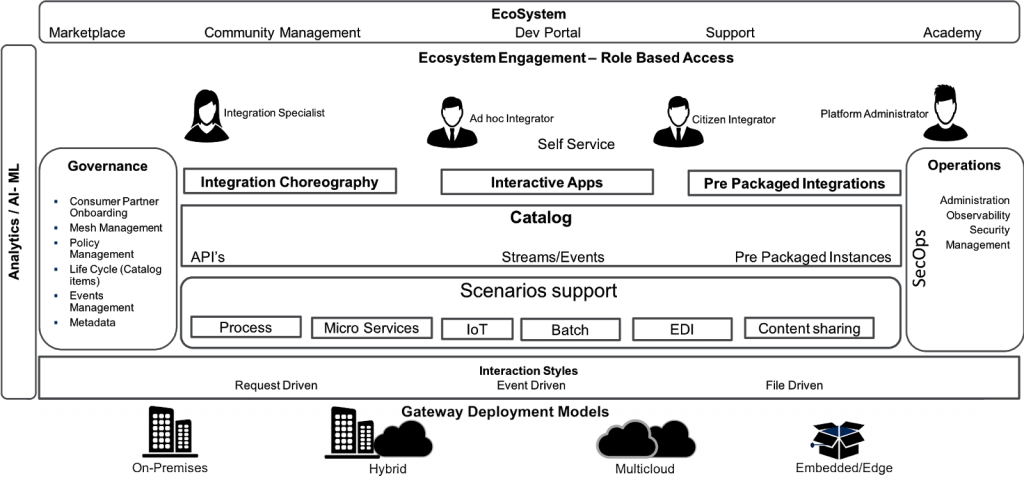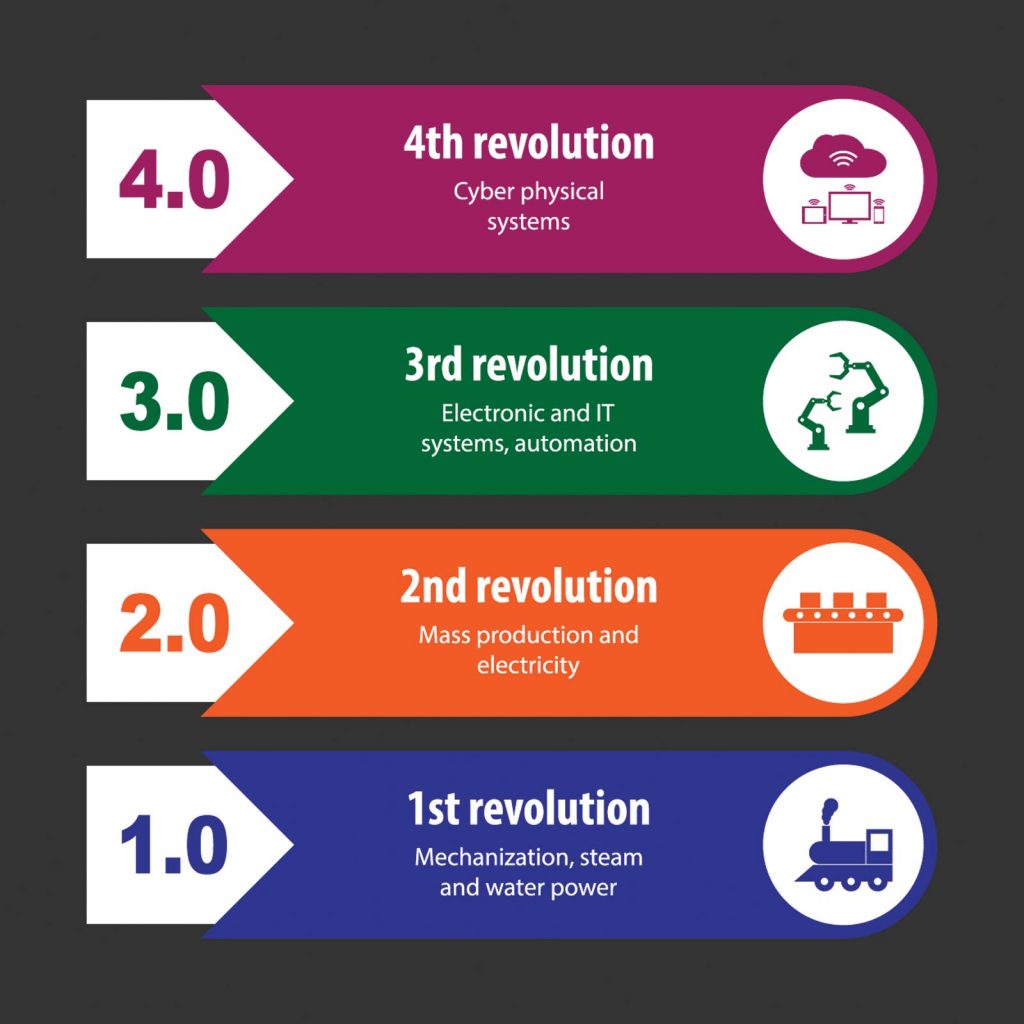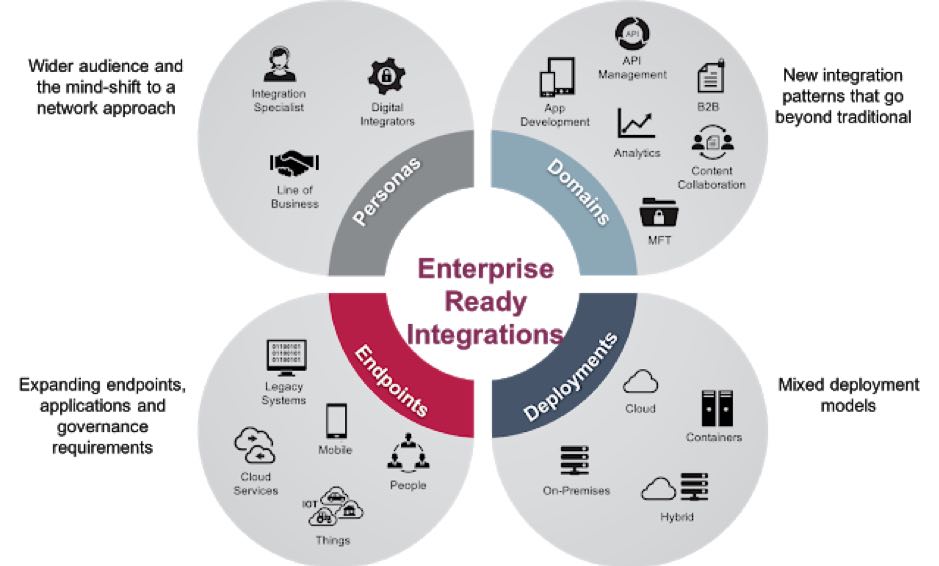The world is changing fast.
“it’s no longer the Big beating the small but the Fast beating the slow,” due to changing customer expectations around experience.
Industrial revolution 4.0 has helped fuel the pace with which businesses are evolving or rather revolutionizing using smart technologies. It has created a challenge for leaders across different industries.
With that in mind traditional businesses are undergoing two journeys – “Digital Business transformation” and to support that journey/goal they undergo “IT modernization.” Given the digital journey, most businesses are now focused on – Speed to market, Agility, ease of Innovation and obviously Cost. Digital transformation is not a destination, it’s an ongoing journey and same applies to modernizations. Without business objective, modernization on its own is not enough, modernization helps save money, but digital transformation help make money.
READ MORE: What IT leaders are saying about IT modernization [INFOGRAPHIC]
Key challenge for these two journeys are “Cultural shift” and “Integration Evolution” to align with raised customer expectations. Let’s talk about integration evolution as cultural shift is a wider topic and not intended for this blog. However, I would like to highlight that it’s an important one and without that any transformation journey just becomes an overhead and never succeed.
When I talk about “Integration Evolution”, it basically means that organizations have to re-consider their integration strategy from the new business capability perspective to support easy adoption and integration of new technologies and design patterns to be digitally enabled.
How does that relate to business though? It does, as business can’t be successful in transformation if they don’t address it. I don’t see business and IT as different teams anymore, they are one team, technology adoption is now driven by business needs and should be delivered based on how business wants to consume it and thus being budgeted as well by them. In case of Digital transformation, strategy is key and is driven by “Digital Leaders”, who can best digitally re-imagine the business and unite rest of the leadership to deliver.
Basically, business drivers trigger change in how solutions are implemented, these two are tightly coupled. Hence, it’s all about business business and business.
The business value of a Hybrid Integration Platform
In a survey done by Axway, 91% participants agreed that “being able to integrate seamlessly across different systems, departments, and partners is crucial for business success”.
To address speed to market “evolution of integration” within ecosystem becomes vital. It’s not easy when you have to start looking modernising the application ecosystem and at same time support digital business outcomes for your customers. Key challenges around these journeys would be –
| Modernization | Digital Enablement |
| Distributed Application landscape | How to expose interfaces (API’s) for digital business |
| New Integration patterns to be supported | Security concerns |
| Leverage investment in different legacy applications and technologies | Central catalog for all API’s and Events to allow innovation |
| Having central ecosystem governance due to hybrid application ecosystem and geo distributed teams | |
| How to achieve process refinement and automation |
I have depicted challenges under two different buckets, they sit under one strategy but are addressing two different journeys.
Survey participants highlighted few key challenges that are slowing them down, these challenges can be categorized in four key areas: Deployments (cloud and on-premises), domains (multiple integration patterns), endpoints (number and security of connections), and personas (people accomplishing integrations). The below view depicts these challenges –
What should be the Strategy?
Moving towards HiP will not only provide a single pane of glass to govern all your integrations but also help build new innovative applications. It helps specialist personas to work as enabler for business functions by creating pre-packaged templates. It allows non tech users to leverage interactive apps and templates with no little knowledge around them helping with speed to market and cost reduction. It can also help CxO’s to bring their investment under different technologies(gateway’s) under one umbrella for better governance and efficiency.
 This is a high-level view of the platform that organizations should start looking to get too.
This is a high-level view of the platform that organizations should start looking to get too.
How it Helps?
Hybrid Integration platform supports all integration interaction styles and patterns as a platform, so it really helps speed up building integrations with hybrid deployed applications and adopt new architecture patterns and technologies. API’s and Events in the ecosystem surfaced under unified catalog not only allow to be leveraged by different integrations but can be consumed by different channels to create experience that customers are looking for.
It’s not only the Hub for all integrations but also allow innovation, as API’s and events (AI and ML can be leveraged) are route to innovation in digital ecosystem. With use of modern technologies around mini and micro services it also takes away the pain of micro service management which is an overhead when it comes to modernization of applications and it not just create complexity but also makes the operational management a night mere.
Business or Trading partner and consumer management is a long process in the organisations and hindrance to speed to do business with new partners or open new business channels. Platform addresses that as well by not only saving time on on boarding process but making it smoother experience with minimum operational overhead.
While doing all this security is paramount and is a key concern from most business leaders as they move towards hybrid ecosystem and digital channels. Integration platform becomes the defence line by not only protecting all the inbound and outbound communications, but it also protects all internal interactions and allow central security policy definition and enforcement.
Basically, it’s a recipe that will address all integration challenges that organizations are expected to face during the transformation journey and Axway AMPLIFY has all the ingredients for the required recipe.
However, with growing complexity of change, platform vendors have to ensure that they keep with the market pace to allow their customers to focus on business capabilities and they support all the required tech capabilities with changing market trends.
Strategy and Business Value
How it will help derive business value? The measurement of it is more aligned to business objective of getting digitally transformed and impact with experience by generating more revenue and saving on cost.
- Gateway to Experience Economy
It enables organizations for creating experience that their customers are looking for, it helps set the business for today and for future.
- Innovation
Integration Platform provide customers with stream of events and API’s which are key for building innovative applications. AI and ML can be leveraged on events across the ecosystem including IoT data that can be part of the business process. This allows customers to build intelligent and interactive apps for their customers.
Innovation allows business to grow many folds and build experience economy based around customer demands and thus is a big contributor towards business success or getting business into smart business mode.
- Speed
Speed to market is a key while transforming the business, new offerings have to be delivered fast as it is key to keep the customers engaged. Speed to Market is achieved when you have enhanced developer experience with the ability to deliver fast. Platform provides that capability by –
- Auto catalog as services and events surface
- Quick Data Virtualization through API’s in minutes rather days.
- Quickly deliver Experience API’s based on need
- Allow focus on Business Logic and help speed consumption by taking overhead away
- Building integration in hours compared to days, for e.g. from Salesforce to ServiceNow or from SAP cloud to on-prem.
- Fast Track on boarding of Trading Partners
All this allow team to deliver offerings quickly to the market.
- Agility
HiP allows customers to adopt new applications and implement new business process in fast changing environment. It allows to build based on changing customer requirements and release those capabilities quickly to the market.
- Cost savings
Below are few examples around direct cost saving but should not be limited too –
- Quick development based on no code low code integration development
- API’s or services that can be reused, so factor of reusable component and ease of API life cycle management help save cost
- Central Security around all integration patterns save effort and operational overhead around it
- scalability and high availability of services with least configuration
- Operational intelligence along with central alerting across the board saves cost on continuous monitoring of applications
- Experience driven platform will help different personas with recommendations and suggestions based on their interest
- Trading partner on-boarding from month/days to couple of hours saves a lot on the process.
Given all above benefits, hybrid integration platform should help customers with not only direct cost savings but in also business growth. There is no one formula or framework to measure the benefits as it will depend on organizations and their maturity. However, it’s pretty evident from above that Businesses have to have strong integration platform strategy now to achieve targeted outcome.
 Yes….Platform, Platform, and Platform!
Yes….Platform, Platform, and Platform!
If you want to discuss more around it, please connect with our Catalysts to discuss.




